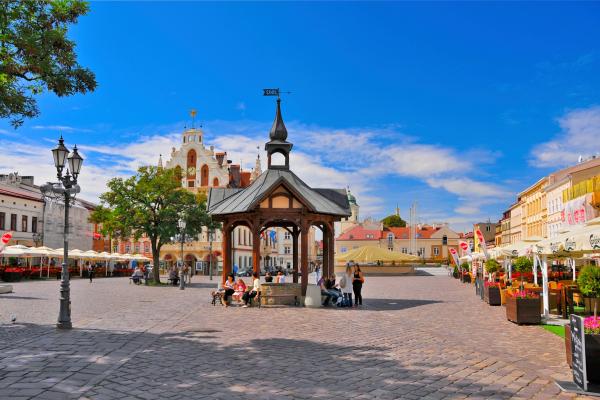
A steady but significant demographic transition is reshaping the EU’s socio-economic landscape. European population is overall declining and ageing, and this affects economic growth, public services and social support systems. However, the consequences of this transition vary substantially across countries and territories. Particularly, remote rural regions are facing the most profound impacts.
With their population simultaneously shrinking and ageing, remote rural regions face a dual challenge: a growing number of people who may need care and a shrinking working-age population. Many regions face this dual challenge, but it is most pronounced in remote rural regions. On top of that remote rural regions tend to have a lower level of development and lower economic growth, which makes it harder from them to attract to new working-age residents.
Demographic and economic change across regional typologies: a layered perspective
Addressing these trends is difficult if local and national decision makers lack adequate understanding of how the interplay between demographic and economic factors affects society. In addition, implementing uniform solutions would be inadequate, since depopulation and ageing affect territories differently.
A JRC working paper, Outlook and demographic perspectives for EU’s rural regions. A modelling-based exercise, analyses population trends in the 2000-2022 period and generates projections until 2040. It examines their connection with economic changes across four regional typologies in the EU: urban, intermediate, rural close to a city and rural remote regions.
The analysis relies on the Demography, Economy, Land use interaction (DELi) model, which provides sub-national projections of population, employment, GDP and land use. While most current socioeconomic projections examine population and GDP trends separately, the DELi model can capture the more intricate interplay between the two, zooming in on regional specificities. It also allows to identify the age-group specific drivers of net migration rate.
A shrinking, increasingly urbanised population
Overall, EU population is projected to decline by a relatively modest 0.04% every year until 2040. However, the projections vary per country and per territorial typology. The EU’s Eastern countries are expected to experience the most pronounced decline, with Latvia’s and Lithuania’s populations shrinking by nearly 1%, while the highest population growth is expected in Malta, Ireland, Luxembourg, Cyprus and Sweden, with average annual growth rates above 0.5%.
Changes in population are driven by two main factors: natural change (the difference between births and deaths), and net migration (the difference between outgoing and incoming migrants). Urban regions are likely to continue attracting individuals in working age. This will compensate the negative natural change, and EU urban regions will therefore experience a slight increase of their population by 0.18% a year. By contrast, population is expected to decrease slightly in intermediate regions by 0.11%, at higher pace in rural regions close to a city, by 0.35%, and in remote rural regions by 0.46%.
Ageing and economic growth: territorial disparities
Overall, the EU population is ageing, and births continue to decline. These demographic trends affect the age structure of a society, with economic and social consequences. According to the DELi model projections, the ratio of individuals aged 65 and older over those in working age is expected to increase significantly in all EU regional typologies, and the share of working age population (aged 20-64) is expected to slightly decrease.
Both these changes will have the most acute impact in remote rural regions, where the demographic structure is also affected by migration preferences. Younger generations are typically more attracted to urban regions with higher GDP per capita and more economic and social opportunities, while older age groups seem to prioritise less congested and less densely populated regions.
Since the DELi model considers the interaction between economy and demography, the analysis reveals a clearer territorial pattern, with urban regions projected to attract more population compared to projections that do not take this interplay into account. At the same time, the model suggests that total GDP will be more and more concentrated in urban regions, but rural regions close to cities will experience the fastest growth in GDP per capita.
Remote rural regions: pioneering the adaptation to demographic change?
Remote rural regions seem particularly vulnerable to being left behind – with a few exceptions linked to unique local factors providing additional sources of income and employment, such as specialised industries, tourism or natural resources. In this scenario, a thorough understanding of demographic and economic trends becomes essential to anticipate societal impacts, and to design adaptation strategies tailored to the unique circumstances of each region.
These strategies should consider increasing labour productivity with new technologies and boosting labour market participation, especially of young and older people, women and immigrants. For example, these strategies could leverage the knowledge and capital of older populations to spur new business initiatives.
To provide a high quality of life, these strategies should ensure that public services are well distributed and easily accessible to cover the essential needs of all age groups. Policies should consider local specificities when addressing evolving needs and demands for services, particularly healthcare and engage regional actors.
Remote rural regions could already be used as laboratories of effective adaptation to the ongoing demographic change which will affect an increasing number of regions going forward.
Background
The JRC working paper ‘Outlook and demographic perspectives for EU’s rural regions. A modelling-based exercise’ was published as part of the Rural Observatory’s activities. The observatory provides detailed statistics and analyses on EU rural areas, covering economic, social and environmental aspects. It is a key tool of the long-term vision for the EU’s rural areas up to 2040.
Related content
Outlook and demographic perspectives for EU’s rural regions. A modelling-based exercise
The Demography-Economy-Land use interaction (DELi) model
Challenges and opportunities for territorial cohesion in Europe
Details
- Publication date
- 4 April 2025
- Author
- Joint Research Centre
- JRC portfolios 2025-27





